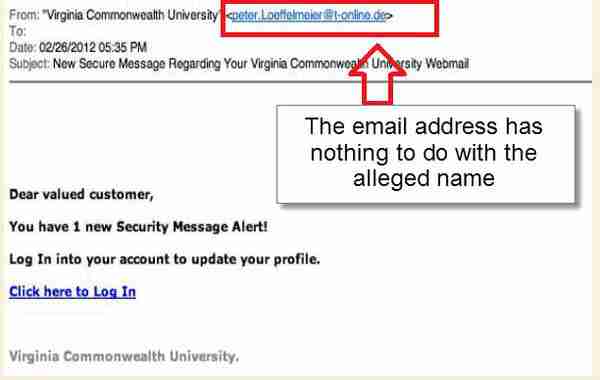Links are the perfect bait to lure us to malware. It’s extremely difficult to resist the temptation to click on a link, right? Is there a way to spot fraudulent links? In fact, we’ve got a few little tricks. Alone, they aren’t foolproof but together, they could help you avoid a bad situation .
Fraudulent links usually appear in two different contexts: in an email or a social network conversation (for example, Facebook Messenger). So, the first step to spotting a deceptive link is to answer this question: do you know the person or entity who sent you the message?
If the link has been sent by an unknown person , all you have to do is click on his/her account and investigate a bit. You can even search for the name on Google, just in case.
In the case of email, look at the message’s full header to see the address of the person or entity who sent you the message. If the address is suspicious , you can delete the message immediately.

What happens if you know the person who sent the message, but you notice something is off? Keep in mind that if a friend has been hacked, his/her computer could be sending these deceptive links without anybody’s knowledge.
The solution for both email and messaging is simple: ask the other person if he/she sent you the link. You’re not in a rush, are you?
Here’s an example of a trap.

But sometimes, fraudulent emails or messages will use personal data to trick you . There’s no black magic behind it: the wrongdoers involved simply have found some of the information that the internet is crawling with.
It’s easy to find out if these emails or messages have hidden traps. Do they ask you to give out information like your bank account, or password …? Ah-ha! No reputable company will ever ask you for information like that.
If you want more evidence, hover your cursor over the link in question without clicking on it. Does a suspicious URL appear at the bottom of your navigation pane? Then it’s better you don’t risk it.
Is the URL shortened? Use the page CheckShortURL . Paste the address in it and it will give you a preview of the page hidden behind it.
Before we finish, let’s review the related topic of attachments , since sometimes viruses are hidden in them. For starters, sometimes they involve the easy trap of hiding an image with an embedded malicious link via a fake attachment.
Be careful with Office documents that end in “m.” They’re files that usually contain malware. Same with JavaScript files (.js).
What are your tricks for avoiding fraudulent links?
